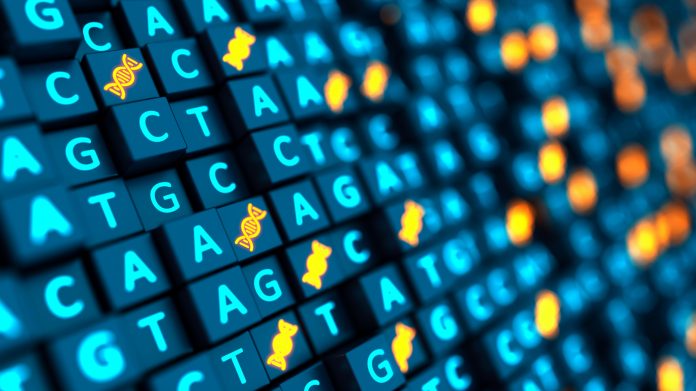We spoke to Dr Joanne Hackett, Former Chief Commercial Officer of Genomics England and Regional Board Member of Movement Health 2030, about how genomic sequencing supports preparedness and response to public health threats
Genomic sequencing is a method scientists use to decipher the genetic material found in organisms or viruses. The significance of genomic sequencing tools was truly brought to the fore during the COVID-19 pandemic as researchers were able to observe any sudden changes (or mutations) in a virus’s genetic code which may give it an advantage over other variants of itself, for example, spreading faster or causing more harm to those it infects.
Mutations do not always result in a major change in a virus’s ability to spread or cause disease. Still, if variants are left unchecked, they can become more prevalent in a population over a shorter period. Similarly, if a specific variant starts to have a widespread impact on a population, it may be classified as a variant of concern.
Scientists are gaining a better understanding of how organisms and diseases function and adapt to changing environments due to advancements in technologies that support genomic data analysis, like machine learning and big data tools. In the wake of the COVID-19 pandemic, more countries are using novel technologies and data to monitor potentially harmful viruses on a larger scale. The U.S. Centers for Disease Control and Prevention (CDC) established a new Center for Forecasting and Outbreak Analytics hub in 2021 to expand data sharing and integration capabilities and improve forecasting and outbreak analytics in public health decision-making to better respond to public health threats. The CDC subsequently launched a new Notice of Funding Opportunity (NOFO) to support decision-making in emergencies and establish a national outbreak response network.
This programme aims to assist state and local officials in creating and utilising the most appropriate analytical tools based on reliable data for their respective areas. Dylan George, Director of CDC’s Center for Forecasting and Outbreak Analytics, said: “This network will increase our national capacity to use disease models, analytics, and forecasts to support public health action, prevent infections, protect people, and safeguard economies. The network will also provide desperately needed tools to fight outbreaks quickly and effectively in our communities, where critical response decisions are made.”
In the UK, Genomics England collaborates with NHS England and the NHS Genomic Medicine Service to collect genomic data and create customised and predictive healthcare solutions. One of its noteworthy initiatives is the COVID-19 Study, which involves partnering with the GenOMICC consortium to examine the genome sequences of roughly 20,000 individuals who suffered severe illness from contracting the coronavirus.
By comparing their genomes with those who experienced mild symptoms or were asymptomatic, they aim to gain deeper insights into the factors contributing to COVID-19’s impact on people.
To discuss the role of surveillance and genomic sequencing in aiding the response to public health threats, we spoke to Dr Joanne Hackett, Head of Genomic and Precision Medicine at IQVIA and Former Chief Commercial Officer of Genomics England.
Can you describe the virus genome sequencing process and how it supports the detection and control of infectious diseases?
Virus genome sequencing proved to be a key tool in the detection of SARS-CoV-2 variants in the pandemic. Technically speaking, a virus is easy to sequence as it is so small compared to a human genome. The bigger challenges are the speed of sequencing and the importance of timely sharing.
The early sharing of genomic sequencing data from the novel pneumonia in China in early 2020 allowed the rapid development of diagnostic tests and, most crucially, the record-breaking development of vaccines.
The big global achievement was to scale up genomic sequencing to be able to deal with massive numbers of positive specimens and report them in national and global databases. There are currently over nine million SARS-CoV-2 genomes on the global GISAID database. The rapid uploading of sequences led to the identification of the major variants of concern – often initially given the names of the countries that first identified them due to effective surveillance. These are now more sensibly referred to via Greek letters.
What was the significance of ongoing viral monitoring during the COVID-19 pandemic? How have genomic sequencing surveillance strategies and sequencing technologies changed since the pandemic began?
The initial population-scale viral genomic sequencing of genomes relied on academic consortia working with hospitals and public health agencies. In time, once the value of viral genomes was established, these academic efforts have been aligned with national testing strategies. The other major challenge has been robust sampling strategies and the ability to link viral genomes to patient data – including the date of infection and severity of the illness. Some countries have struggled to achieve this due to the separation of testing and sequencing facilities and concerns about data governance.
How did the UK’s surveillance system for new variants compare to other countries?
The UK established a very rapid viral sequencing capability through the work of the COG-UK Consortium led by Sharon Peacock and colleagues and relying on existing research capacity at the Sanger Centre, the Quadram Institute, and many others. Research agencies funded this, but it was quickly connected to the main PCR testing laboratory network, the Lighthouse Laboratories. The data then flowed via existing academic databases into the four main public health agencies in the UK.
At one time, the UK had deposited over 50% of the sequences in the global databases and remains second only to the USA for total SARS-CoV-2 sequences.
The UK has also funded an initiative called the New Variant Assessment Platform that supports low- and middle-income countries to develop their own genomic sequencing and analysis capabilities and to support the biological characterisation of new variants using facilities in the UK.
How important is international collaboration to the work of genomic pathogen surveillance, and can you outline any associated challenges?
The pandemic has highlighted the importance of international cooperation and data sharing. COVID-19 relied on infrastructure developed to respond to pandemic influenza, including the GISAID database.
Several global initiatives during the pandemic highlighted the importance of pathogen genomics that shaped the response to that and potentially any future pandemic threats. The WHO and G7 have recommended that all countries aimed to sequence 5-10% of COVID-19 cases and that data be shared widely to track new variants of concern, drive enhanced responses, and inform plans for vaccination or modified vaccine composition.
Several countries have taken specific action to improve global cooperation. Under the UK’s G7 presidency, Sir Jeremy Farrar recommended a global network of expertise to provide a new ‘global pandemic radar’.
This is being developed at the International Pathogen Surveillance Network led by the WHO. Germany has committed funding to a WHO Hub for Pandemic and Epidemic Intelligence in Berlin to develop tools to detect and tackle new pandemic threats. Many countries are funding enhanced surveillance facilities and support from global initiatives like the Coalition for Epidemic Preparedness Innovation (CEPI) and the One Health initiatives on animal and agricultural threats.
How do you see the UK and Europe’s genomic industries developing in the future to support response efforts to public health threats such as antimicrobial resistance?
The industry has played a key role in developing diagnostics, vaccines, and countermeasures and has relied on genomics and advanced data analytics. Genomics and other industries are key partners in initiatives like the 100 Days Mission to accelerate the response to a new pandemic threat. Antimicrobial resistance is also a key public health priority requiring global action. Many of the capabilities used in the COVID pandemic are capable of being applied in AMR surveillance and response.











